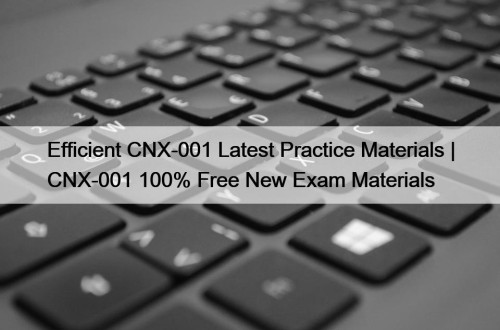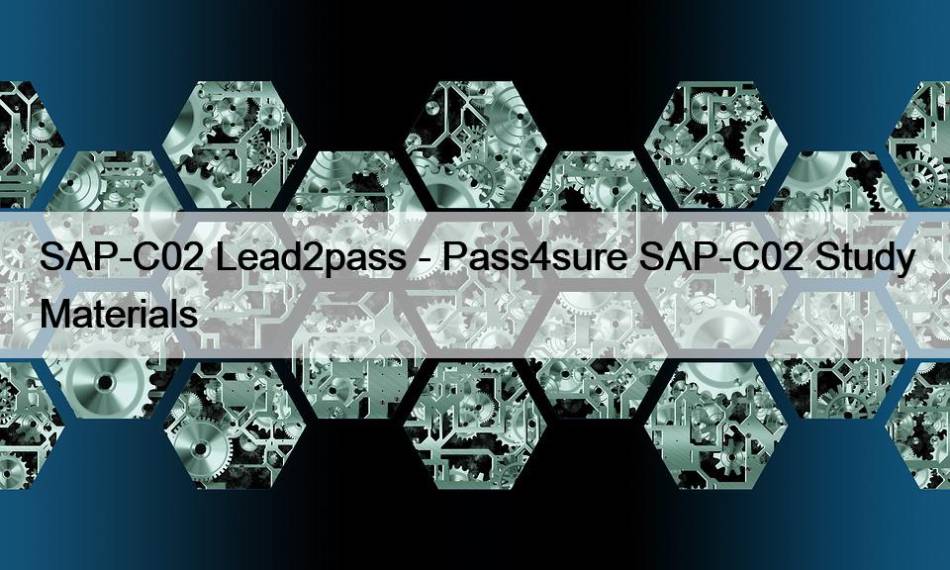Most Popular
 DCPLA Latest Study Guide | DCPLA Valid Test Sims
DCPLA Latest Study Guide | DCPLA Valid Test Sims
Please don’t worry about the purchase process because it’s really ...
 Efficient CNX-001 Latest Practice Materials | CNX-001 100% Free New Exam Materials
Efficient CNX-001 Latest Practice Materials | CNX-001 100% Free New Exam Materials
Free demos offered by PracticeDump gives users a chance to ...
 Valid NACE-CIP2-001 Exam Objectives & NACE-CIP2-001 Reliable Test Review
Valid NACE-CIP2-001 Exam Objectives & NACE-CIP2-001 Reliable Test Review
BTW, DOWNLOAD part of DumpsActual NACE-CIP2-001 dumps from Cloud Storage: ...



SAP-C02 Lead2pass - Pass4sure SAP-C02 Study Materials

What's more, part of that PassLeader SAP-C02 dumps now are free: https://drive.google.com/open?id=1r6ePw3m4KdFzoqYQTW3DMI-Enj3dpAT_
Our SAP-C02 PDF format is also an effective format to do test preparation. In your spare time, you can easily use the SAP-C02 dumps PDF file for study or revision. The PDF file of Amazon SAP-C02 real questions is convenient and manageable. These Amazon SAP-C02 Questions are also printable, giving you the option of paper study since some Amazon SAP-C02 applicants prefer off-screen preparation rather than on a screen.
The SAP-C02 certification exam is an important milestone for IT professionals who want to advance their careers in cloud computing. It demonstrates their expertise in designing and deploying complex applications on the AWS platform and validates their skills and knowledge to potential employers. By passing the SAP-C02 exam, candidates can prove their proficiency in managing and deploying cloud-based solutions at an enterprise level.
The SAP-C02 exam covers a broad range of topics related to AWS architecture, including designing and deploying complex applications, designing and deploying enterprise-scale operations, and designing and deploying hybrid IT architectures. SAP-C02 exam also covers topics related to security, cost optimization, and performance optimization, among others. SAP-C02 Exam consists of multiple-choice and multiple-response questions, and candidates have 180 minutes to complete it.
Amazon SAP-C02 (AWS Certified Solutions Architect - Professional (SAP-C02)) Exam is a highly respected certification that demonstrates an individual's expertise in designing and deploying scalable, highly available, and fault-tolerant systems on the AWS platform. SAP-C02 exam covers a wide range of topics related to AWS architecture and requires extensive preparation and study. However, achieving this certification can open up a wide range of career opportunities and help professionals stand out in a highly competitive job market.
Free PDF Quiz Amazon - SAP-C02 - AWS Certified Solutions Architect - Professional (SAP-C02) Unparalleled Lead2pass
PassLeader offers a full refund guarantee according to terms and conditions if you are not satisfied with our AWS Certified Solutions Architect - Professional (SAP-C02) (SAP-C02) product. You can also get free Amazon Dumps updates from PassLeader within up to 365 days of purchase. This is a great offer because it helps you prepare with the latest AWS Certified Solutions Architect - Professional (SAP-C02) (SAP-C02) dumps even in case of real AWS Certified Solutions Architect - Professional (SAP-C02) (SAP-C02) exam changes. PassLeader gives its customers an opportunity to try its SAP-C02 product with a free demo.
Amazon AWS Certified Solutions Architect - Professional (SAP-C02) Sample Questions (Q362-Q367):
NEW QUESTION # 362
A company is migrating a document processing workload to AWS. The company has updated many applications to natively use the Amazon S3 API to store, retrieve, and modify documents that a processing server generates at a rate of approximately 5 documents every second. After the document processing is finished, customers can download the documents directly from Amazon S3.
During the migration, the company discovered that it could not immediately update the processing server that generates many documents to support the S3 API. The server runs on Linux and requires fast local access to the files that the server generates and modifies. When the server finishes processing, the files must be available to the public for download within 30 minutes.
Which solution will meet these requirements with the LEAST amount of effort?
- A. Set up an Amazon S3 File Gateway and configure a file share that is linked to the document store.
Mount the file share on an Amazon EC2 instance by using NFS. When changes occur in Amazon S3, initiate a RefreshCache API call to update the S3 File Gateway. - B. Configure Amazon FSx for Lustre with an import and export policy. Link the new file system to an S3 bucket. Install the Lustre client and mount the document store to an Amazon EC2 instance by using NFS.
- C. Migrate the application to an AWS Lambda function. Use the AWS SDK for Java to generate, modify, and access the files that the company stores directly in Amazon S3.
- D. Configure AWS DataSync to connect to an Amazon EC2 instance. Configure a task to synchronize the generated files to and from Amazon S3.
Answer: B
Explanation:
Amazon FSx for Lustre is a fully managed service that provides cost-effective, high-performance, scalable storage for compute workloads. Powered by Lustre, the world's most popular high-performance file system, FSx for Lustre offers shared storage with sub-ms latencies, up to terabytes per second of throughput, and millions of IOPS. FSx for Lustre file systems can also be linked to Amazon Simple Storage Service (S3) buckets, allowing you to access and process data concurrently from both a high-performance file system and from the S3 API.
NEW QUESTION # 363
A company wants to migrate to AWS. The company wants to use a multi-account structure with centrally managed access to all accounts and applications. The company also wants to keep the traffic on a private network. Multi-factor authentication (MFA) is required at login, and specific roles are assigned to user groups.
The company must create separate accounts for development. staging, production, and shared network. The production account and the shared network account must have connectivity to all accounts. The development account and the staging account must have access only to each other.
Which combination of steps should a solutions architect take 10 meet these requirements? (Choose three.)
- A. Deploy a landing zone environment by using AWS Control Tower. Enroll accounts and invite existing accounts into the resulting organization in AWS Organizations.
- B. Create transit gateways and transit gateway VPC attachments in each account. Configure appropriate route tables.
- C. Enable AWS Control Tower in all Recounts to manage routing between accounts. Collect findings through AWS CloudTrail to force MFA login.
- D. Create IAM users and groups. Configure MFA for all users. Set up Amazon Cognito user pools and identity pools to manage access to accounts and between accounts.
- E. Enable AWS Security Hub in all accounts to manage cross-account access. Collect findings through AWS CloudTrail to force MFA login.
- F. Set up and enable AWS IAM Identity Center (AWS Single Sign-On). Create appropriate permission sets with required MFA for existing accounts.
Answer: A,B,F
Explanation:
Explanation
The correct answer would be options A, C and D, because they address the requirements outlined in the question. A. Deploying a landing zone environment using AWS Control Tower and enrolling accounts in an organization in AWS Organizations allows for a centralized management of access to all accounts and applications. C. Creating transit gateways and transit gateway VPC attachments in each account and configuring appropriate route tables allows for private network traffic, and ensures that the production account and shared network account have connectivity to all accounts, while the development and staging accounts have access only to each other. D. Setting up and enabling AWS IAM Identity Center (AWS Single Sign-On) and creating appropriate permission sets with required MFA for existing accounts allows for multi-factor authentication at login and specific roles to be assigned to user groups.
NEW QUESTION # 364
A company needs to optimize the cost of an AWS environment that contains multiple accounts in an organization in AWS Organizations. The company conducted cost optimization activities 3 years ago and purchased Amazon EC2 Standard Reserved Instances that recently expired.
The company needs EC2 instances for 3 more years. Additionally, the company has deployed a new serverless workload.
Which strategy will provide the company with the MOST cost savings?
- A. Purchase a I-year Compute Savings Plan with No Upfront payment in each member account. Use the Savings Plans recommendations in the AWS Cost Management console to choose the Compute Savings Plan.
- B. Purchase a 3-year EC2 Instance Savings Plan with All Upfront payment in each member account. Use the Savings Plans recommendations in the AWS Cost Management console to choose the EC2 Instance Savings Plan.
- C. Purchase a 3-year EC2 Instance Savings Plan with No Upfront payment in the management account to cover EC2 costs in each AWS Region. Purchase a 3- year Compute Savings Plan with No Upfront payment in the management account to cover any additional compute costs.
- D. Purchase the same Reserved Instances for an additional 3-year term with All Upfront payment. Purchase a 3-year Compute Savings Plan with All Upfront payment in the management account to cover any additional compute costs.
Answer: D
Explanation:
Explanation
The company should purchase the same Reserved Instances for an additional 3-year term with All Upfront payment. The company should purchase a 3-year Compute Savings Plan with All Upfront payment in the management account to cover any additional compute costs. This solution will provide the company with the most cost savings because Reserved Instances and Savings Plans are both pricing models that offer significant discounts compared to On-Demand pricing. Reserved Instances are commitments to use a specific instance type and size in a single Region for a one- or three-year term. You can choose between three payment options:
No Upfront, Partial Upfront, or All Upfront. The more you pay upfront, the greater the discount1. Savings Plans are flexible pricing models that offer low prices on EC2 instances, Fargate, and Lambda usage, in exchange for a commitment to a consistent amount of usage (measured in $/hour) for a one- or three-year term. You can choose between two types of Savings Plans: Compute Savings Plans and EC2 Instance Savings Plans. Compute Savings Plans apply to any EC2 instance regardless of Region, instance family, operating system, or tenancy, including those that are part of EMR, ECS, or EKS clusters, or launched by Fargate or Lambda. EC2 Instance Savings Plans apply to a specific instance family within a Region and provide the most savings2. By purchasing the same Reserved Instances for an additional 3-year term with All Upfront payment, the company can lock in the lowest possible price for its EC2 instances that run continuously for 3 years. By purchasing a 3-year Compute Savings Plan with All Upfront payment in the management account, the company can benefit from additional discounts on any other compute usage across its member accounts.
The other options are not correct because:
Purchasing a 1-year Compute Savings Plan with No Upfront payment in each member account would not provide as much cost savings as purchasing a 3-year Compute Savings Plan with All Upfront payment in the management account. A 1-year term offers lower discounts than a 3-year term, and a No Upfront payment option offers lower discounts than an All Upfront payment option. Also, purchasing a Savings Plan in each member account would not allow the company to share the benefits of unused Savings Plan discounts across its organization.
Purchasing a 3-year EC2 Instance Savings Plan with No Upfront payment in the management account to cover EC2 costs in each AWS Region would not provide as much cost savings as purchasing Reserved Instances for an additional 3-year term with All Upfront payment. An EC2 Instance Savings Plan offers lower discounts than Reserved Instances for the same instance family and Region. Also, a No Upfront payment option offers lower discounts than an All Upfront payment option.
Purchasing a 3-year EC2 Instance Savings Plan with All Upfront payment in each member account would not provide as much flexibility or cost savings as purchasing a 3-year Compute Savings Plan with All Upfront payment in the management account. An EC2 Instance Savings Plan applies only to a specific instance family within a Region and does not cover Fargate or Lambda usage. Also, purchasing a Savings Plan in each member account would not allow the company to share the benefits of unused Savings Plan discounts across its organization.
References:
https://aws.amazon.com/ec2/pricing/reserved-instances/
https://aws.amazon.com/savingsplans/
NEW QUESTION # 365
A financial company is building a system to generate monthly, immutable bank account statements for its users. Statements are stored in Amazon S3. Users should have immediate access to their monthly statements for up to 2 years. Some users access their statements frequently, whereas others rarely access their statements. The company's security and compliance policy requires that the statements be retained for at least 7 years.
What is the MOST cost-effective solution to meet the company's needs?
- A. Create an S3 bucket with versioning enabled. Store statements in S3 Intelligent-Tiering. Use same-Region replication to replicate objects to a backup S3 bucket. Define an S3 Lifecycle policy for the backup S3 bucket to move the data to S3 Glacier. Attach an S3 Glacier Vault Lock policy with deny delete permissions for archives less than 7 years old.
- B. Create an S3 bucket with Object Lock disabled. Store statements in S3 Standard. Define an S3 Lifecycle policy to transition the data to S3 Standard-Infrequent Access (S3 Standard-IA) after 30 days.
Define another S3 Lifecycle policy to move the data to S3 Glacier Deep Archive after 2 years.
Attach an S3 Glacier Vault Lock policy with deny delete permissions for archives less than 7 years old. - C. Create an S3 bucket with Object Lock enabled. Store statements in S3 Intelligent-Tiering. Enable compliance mode with a default retention period of 2 years. Define an S3 Lifecycle policy to move the data to S3 Glacier after 2 years. Attach an S3 Glacier Vault Lock policy with deny delete permissions for archives less than 7 years old.
- D. Create an S3 bucket with versioning disabled. Store statements in S3 One Zone-Infrequent Access (S3 One Zone-IA). Define an S3 Lifecyde policy to move the data to S3 Glacier Deep Archive after 2 years. Attach an S3 Glader Vault Lock policy with deny delete permissions for archives less than 7 years old.
Answer: C
Explanation:
https://aws.amazon.com/about-aws/whats-new/2018/11/s3-object-lock/
Create an S3 bucket with Object Lock enabled. Store statements in S3 Intelligent-Tiering. Enable compliance mode with a default retention period of 2 years. Define an S3 Lifecycle policy to move the data to S3 Glacier after 2 years. Attach an S3 Glacier Vault Lock policy with deny delete permissions for archives less than 7 years old.
https://docs.aws.amazon.com/AmazonS3/latest/userguide/object-lock-overview.html
NEW QUESTION # 366
A company is storing data in several Amazon DynamoDB tables. A solutions architect must use a serverless architecture to make the data accessible publicly through a simple API over HTTPS. The solution must scale automatically in response to demand.
Which solutions meet these requirements? (Choose two.)
- A. Create an Amazon API Gateway HTTP API. Configure this API with direct integrations to Dynamo DB by using API Gateway's AWS integration type.
- B. Create a Network Load Balancer. Configure listener rules to forward requests to the appropriate AWS Lambda functions
- C. Create an accelerator in AWS Global Accelerator. Configure this accelerator with AWS Lambda@Edge function integrations that return data from the DynamoDB tables.
- D. Create an Amazon API Gateway REST API. Configure this API with direct integrations to DynamoDB by using API Gateway's AWS integration type.
- E. Create an Amazon API Gateway HTTP API. Configure this API with integrations to AWS Lambda functions that return data from the DynamoDB tables.
Answer: C,E
NEW QUESTION # 367
......
Our customer service is available 24 hours a day. You can contact us by email or online at any time. In addition, all customer information for purchasing AWS Certified Solutions Architect - Professional (SAP-C02) test torrent will be kept strictly confidential. We will not disclose your privacy to any third party, nor will it be used for profit. Then, we will introduce our products in detail. On the one hand, AWS Certified Solutions Architect - Professional (SAP-C02) test torrent is revised and updated according to the changes in the syllabus and the latest developments in theory and practice. On the other hand, a simple, easy-to-understand language of SAP-C02 Test Answers frees any learner from any learning difficulties - whether you are a student or a staff member. These two characteristics determine that almost all of the candidates who use SAP-C02 guide torrent can pass the test at one time. This is not self-determination.
Pass4sure SAP-C02 Study Materials: https://www.passleader.top/Amazon/SAP-C02-exam-braindumps.html
- SAP-C02 Guide Torrent: AWS Certified Solutions Architect - Professional (SAP-C02) - AWS Certified Solutions Architect - Professional (SAP-C02) Dumps VCE 😃 Search on ⏩ www.getvalidtest.com ⏪ for ➥ SAP-C02 🡄 to obtain exam materials for free download 🐮Pass SAP-C02 Exam
- Free PDF Quiz Amazon SAP-C02 Unparalleled Lead2pass 💞 ▛ www.pdfvce.com ▟ is best website to obtain ➠ SAP-C02 🠰 for free download 💹Real SAP-C02 Questions
- Why Practicing With Pass4Future Amazon SAP-C02 Dumps is Necessary? 🚮 Download ➡ SAP-C02 ️⬅️ for free by simply searching on ➠ www.testsimulate.com 🠰 📑SAP-C02 Reliable Dumps
- 2025 SAP-C02 Lead2pass | The Best AWS Certified Solutions Architect - Professional (SAP-C02) 100% Free Pass4sure Study Materials 🛷 Immediately open “ www.pdfvce.com ” and search for 「 SAP-C02 」 to obtain a free download 🥶SAP-C02 Reliable Test Practice
- Latest updated SAP-C02 Lead2pass - Leader in Qualification Exams - Professional SAP-C02: AWS Certified Solutions Architect - Professional (SAP-C02) 🔄 Open ⏩ www.real4dumps.com ⏪ enter ➠ SAP-C02 🠰 and obtain a free download 👞Reliable SAP-C02 Exam Guide
- Free SAP-C02 Download ⏩ SAP-C02 Flexible Testing Engine 💔 Reliable SAP-C02 Exam Guide 🔸 Simply search for ➤ SAP-C02 ⮘ for free download on 《 www.pdfvce.com 》 ⏸SAP-C02 Dumps
- 100% SAP-C02 Correct Answers 🚰 Reliable SAP-C02 Exam Guide 🧕 Latest SAP-C02 Test Pass4sure 😽 Easily obtain free download of ⇛ SAP-C02 ⇚ by searching on ▷ www.exam4pdf.com ◁ 🧴Preparation SAP-C02 Store
- 2025 SAP-C02 Lead2pass | The Best AWS Certified Solutions Architect - Professional (SAP-C02) 100% Free Pass4sure Study Materials 💻 Easily obtain ⮆ SAP-C02 ⮄ for free download through ➽ www.pdfvce.com 🢪 🧹SAP-C02 Valid Test Cram
- SAP-C02 Dumps 🕳 Free SAP-C02 Download 💉 SAP-C02 Flexible Testing Engine 💉 Simply search for ⮆ SAP-C02 ⮄ for free download on ☀ www.examcollectionpass.com ️☀️ 🎑SAP-C02 Valid Test Cram
- Free PDF Quiz Amazon SAP-C02 Unparalleled Lead2pass ⚡ Search for ( SAP-C02 ) and download it for free on ➠ www.pdfvce.com 🠰 website 🚦SAP-C02 Flexible Testing Engine
- Realistic SAP-C02 Lead2pass - Guaranteed Amazon SAP-C02 Exam Success with Top Pass4sure SAP-C02 Study Materials ⚾ Search on ▶ www.exam4pdf.com ◀ for “ SAP-C02 ” to obtain exam materials for free download 🐖Preparation SAP-C02 Store
- SAP-C02 Exam Questions
- istruire.com zqn.oooc.cn ecomaditya.in swastikaacademy.in bbs.airav.cc digitechnowacademy.com.ng karltay541.glifeblog.com www.haogebbk.com m.871v.com lyceumofmakati.edu.ph
What's more, part of that PassLeader SAP-C02 dumps now are free: https://drive.google.com/open?id=1r6ePw3m4KdFzoqYQTW3DMI-Enj3dpAT_
Tags: SAP-C02 Lead2pass, Pass4sure SAP-C02 Study Materials, SAP-C02 Reliable Exam Simulator, SAP-C02 Reliable Exam Vce, SAP-C02 New Dumps Questions